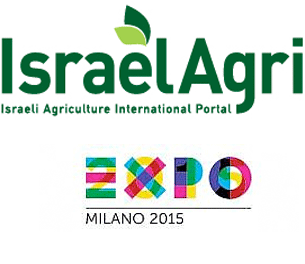Botswana: Botswana Art / Culture Profile 2012
2012/06/25
Botswana Art / Culture Profile 2012
Botswana's arts and crafts mirror the country's rich cultural diversity which has been brought about by its many tribes. This section is an outline of the country's indigenous arts, crafts, music, language, food and beverages.
Indigenous Art
The decorations known as lekgapho on traditional homes are a very impressive art which has been passed through generations. Although the art is slowly dying because many citizens are now building concrete rather than mud houses, a few traditionally decorated houses can still be seen in some rural areas.
Basarwa, whose ancestors are responsible for the rock paintings found throughout Botswana, still display natural artistic skills. Some canvas paintings done by Basarwa artists, who have never been to an art school, show considerable natural talent which can be developed further.
Crafts
Botswana's many tribes have brought about a considerable variety of crafts. The various tribes which originated from neighbouring country's such as Angola, Zimbabwe, South Africa, Namibia and Zambia brought with them the various skills which complemented local craft. The following is an outline of some of the crafts;
Iron-mongery
The Kalanga tribe which originated from the Wange area of present day Zimbabwe mined iron (the traditional mining method was to make fire over the iron brick rocks and to shatter the heated iron by pouring water over it).
Kalanga iron-mongers forged iron hoes (phangule) and traded them with the Tswana speaking people in exchange for the latter's livestock.
Pottery
Various tribes have been making baked clay pots for a number of generations. The clay pots were used for cooking, water storage, brewing of traditional beer and for religious ceremonies, amongst others
Basket Weaving
Basket weaving is perhaps the most outstanding and perfected Botswana craft. The leaves of the Mokolwane palm (Hyphaene petersiana) are used although there are various other bushes and creepers which can be used as alternatives.
Moretlwa bark wrapped around grass straws is one of the other common methods. Various roots and barks are used to give the baskets the desired colour patterns.
The various basket designs which have been passed from generation to generation are associated with the nation's traditional lifestyle. There is, for example, a zig-zag pattern known as " the bull's urine trail " which describes the patterns caused by the movement of the bulls sheath whilst it walks and urinates Baskets are used for a variety of tasks such as grain storage, processing and sifting of pounded grain (sorghum, millet and maize are the most common) and many others.
Bead-work
Basarwa are amongst the leaders in bead work. Crushed ostrich egg shells and imported beads are used to make necklace, bangles and other decorative items
Wood Carving
The prevalence of a wide variety of trees has facilitated the development of highly impressive wood-craft. Carvings of various animals and birds tend to dominate the craft. However besides the latter category, a lot of items carved out of wood are used in the home, although many have been replaced by imported mass-produced items
Amongst the traditional wooden household items are mogopo (wooden bowls), wooden spoons of various sizes, kika (wooden mortar) and motshe (wooden pestle) Communities which stay near the rivers also make wooden mekoro (boats) which are very popular with foreign tourists.
Music Instruments
Traditional musical instruments such as segaba (one stringed instrument), moropa (drum) and setinkana (hand-piano) are also partly crafted with wood.
Leather Crafts
Because of the abundance of the skins of domesticated animals and wildlife, traditional Botswana society developed various ways of processing the skins and making clothing, decorated skin blankets and sleeping mats. The skins are treated with various roots and barks depending on the intended use.
Although clothes made traditionally from leather have been replaced by cloth items, there are still some hunter gatherer communities amongst the Basarwa (Bushmen) who use leather clothing. Traditional dancing groups also use leather clothing during their performances. Exclusive and fashionable leather hand - bags, belts and other items are also currently factory produced to a high standard in Botswana.
Tapestry
Tapestry, consisting mostly of wall-hangings, depict various uniquely Botswana scenes such as traditional homes and wildlife scenes. The various tapestry items are popular with foreign tourists.
Music
The people of Botswana are very receptive to various forms of traditional, modern, local and foreign music. Botswana's divergent tribal cultures have also enriched the country's music. Various energetic and rhythmic dances are performed with the backing of drums, leg rattles, whistles and hand clapping. Some Botswana traditional groups have performed in international festivals and won international acclaim. Songs that appeal to specific age groups and occasions, such as weddings, initiation ceremonies, harvest, healing, and entertainment, have been passed on through generations
Other forms of music are performed with the backing of the setinkana (hand piano) the katara (guitar) and segaba (violin). The guitar has found its way into traditional music, and many songs with the 'guitar flavour' have been passed from generation to generation just like segaba music. The music has been sustained by various talented traditional musicians such as Ratsie Setlhako, Ndona Poifo, George Swabi, Ompone "Sheleng" Ositile, Andries Bok, Speech Madimabe, and many others.
Older forms of music known as dikoma are still performed by old men with the backing of various traditional instruments made from the horn of a kudu, called lepatata, and various bones.
The Language
The present generation of Batswana have a rich heritage of poems, proverbs and folklore that have been passed on by past generations. Many of the latter were passed by word of mouth since reading and writing are, in historical terms, newly acquired skills.
Maboko (Poems)
The subjects of the poems cover a wide field that includes praises to the dikgosi and men of outstanding achievement; highlighting the value of cattle; extolling warriors in past battles and victories; expressing love, aesthetic appreciation; and showing intimate attachment to previous experiences. The poetic compositions could also be based on self-praise.
Proverbs
Like poems, the proverbs (diane and diane) have been passed from generation to generation. Many of the Setswana proverbs contain an instructive moral lesson as the following examples will show:-
O se tshege yo o oleng, mareledi a sale pele
(Do not laugh at someone who has fallen, there are still slippery slopes ahead). The moral is, of course, that you must never celebrate someone else's down-fall because you might be next.
Folklore (Mainane)
As urbanisation and other factors constantly erode the traditional way of life, one of the privileges future generations will miss are fire-side stories told by grand-parents. Known as mainane or dinaane, these captivating stories were usually related to grand-children by their grandmothers in the evenings as the family passed their evenings after the evening meal.
The stories were related by grandparents who in turn had heard them from their own grandparents and other elderly members of the tribe. Many of the stories were about giants, mythical animals, like kgogomodumo (mythical bird), maruarua (whales), the rabbit and its wisdom, the fox and its cunning tricks, the weak defeating the mighty, and many others.
It is interesting that the Botswana folklore covers, amongst others, animals such as whales, which are not found anywhere in the land-locked country. Could the stories be going back to the times when Botswana had a sea? Were the mythical birds such as kgogomodumo some kind of dinosaurs? Research might reveal an interesting link between the stories and other ages
- Botswana News
-
- BOTSWANA: Routes Africa forum aims to improve African air connectivity
- BOTSWANA: Economic integration is helping boost trade and investment in Africa
- BOTSWANA: Africa’s economic growth is likely to be slower in the intervening years
- BOTSWANA: Beyond Commodities: How African Multinationals Are Transforming
- BOTSWANA: Africa,Protect Refugees With Mobile Banking
- BOTSWANA: African Union merges science and education bodies
- Trending Articles
-
- GHANA: Ghana steps up to secure electricity supply
- GABON: Gabon moves to solve housing deficit
- TUNISIA: Tunisia augments ICT exports and connectivity
- TANZANIA: Tanzania Breweries now partners with traditional liquor outlet owners
- SOUTH AFRICA: South Africa to extend ICT reach
- UKRAINE: Public debt for housing and utilities services in February up by 1% to Hr 13.5 billion











